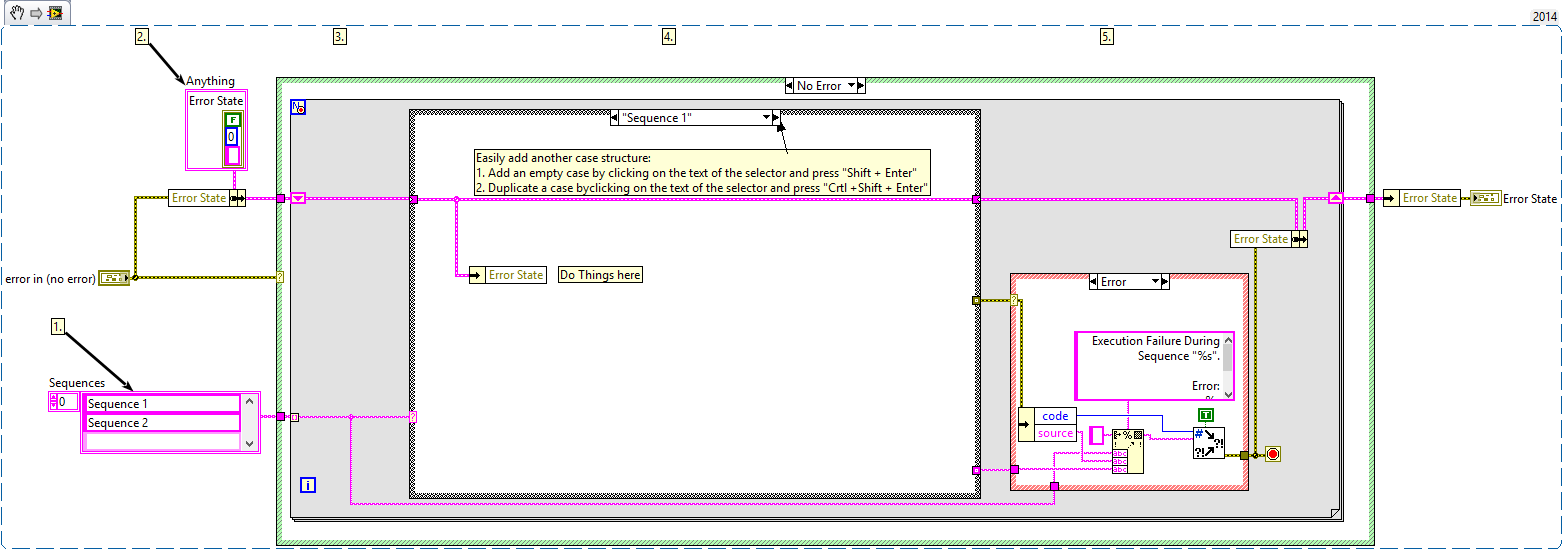Solution
The sequencer design pattern is a way to organize code on the block diagram without hiding code behind subVIs. With the sequencer pattern, you can have one VI that cycles through your pre-defined steps and keeps the code visible to develop.

Other cases just have wired the Data (pink) cluster.
- The Sequence array of hard coded strings represent the abstract ideas to be sequenced. This array can act as a summary of your code.
- The Anything cluster is local data used between sequences. This should not be turned into a Type definition unless it is passed into a subVI.
- The For loop iterates through all the sequences in the order specified by the sequence array. As a modification, you can place a case structure around the sequence array and pass a "mode" into the sequencer to change its behavior.
- The inner Case structure contains the implementation details of each sequence.
- The error handler creates a custom message indicating which sequence failed and with what specific error. Upon error, the sequencer aborts.